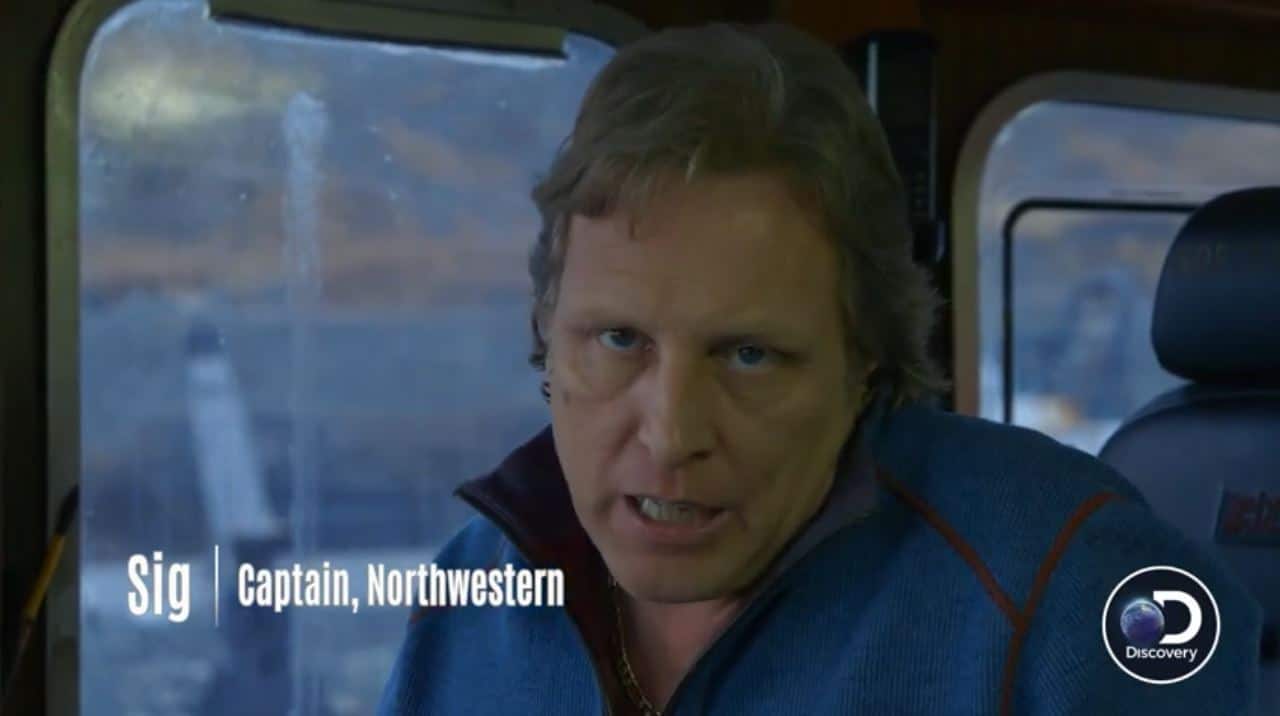
The change of seasons on the Bering Sea will see the Deadliest Catch crab fishermen drift from fall’s mercurial weather conditions to outright life-threatening storms, swells and ultra-frigid temperatures of the winter opilio fishing season.
As narrator Mike Rowe tells us that the fall season “is put to bed and Winter has awakened,” we can clearly see that the weather has made working on the Bering Sea now a life or death gambit.
In our exclusive clip, we join Josh Harris inside the relatively cozy captain’s room of the F/V Cornelia Marie above deck as he warns about the seasonal dangers and frigid conditions. Josh observes the roiling sea and says: “There’s real big weather out here. One of those waves would be pretty devastating to a human body.”
Over on F/V Wizard, captain Monte Colburn says: “We’re trying to finish up and it ain’t over…The weather is definitely slowing us down, we’re still getting to the pots but it’s not nearly as pleasant.”
Each season, more than 250 crab fishing boats converge on Dutch Harbor, Alaska, in search of both snow crab (Opilio) and Alaskan king crab. In Dutch Harbor, the rest of the fleet has arrived for the start of opilio season and with $76 million bucks on the table there is a lot at stake.
F/V captain Jake Anderson surveys the commotion in Dutch Harbor and says: “This is opie season and there’s frequent storms… one after another, but I’m going for it.”
Captain Sean Dwyer of the Brenna A, who happens to be the youngest captain in the fleet currently, says: “We’ll go hit it hard, everybody’s out here to make money.”

Buckle up, as Northwestern captain Sig Hansen says: “It’s always best to try to be one of the first guys out there… if you can coming in for seconds it usually doesn’t help you at all… It will get ugly, it’s gonna be a race.”
The captains know that the most lucrative Alaskan crab fishing occurs in the fall and winter; the winter opilio or snow crab season is a short one. In the Bering Sea, we have learned over the years on Deadliest Catch that the two most active months for the boats to fish are October and January.
The megabucks purse for this crab is vital as each boat can cost several million dollars and the running expenses run into the tens of thousands.
The boats use sonar but for crab, but it’s hard as sonar doesn’t detect crabs that are nestled and congregating on the ocean floor. The captains must rely on intuition, luck, and speed to find the best crabbing location and keep it a secret as long as they can.
To catch the crabs, each captain has their own heady mix of bait. The bait is placed in their “pots” which are really 700-pound steel traps. The bait can consist of ground-up fish like herring, mackerel or even squid. They are dropped to depths upward of 400 feet below the ocean’s surface.
The pots can sit there on the floor for five to 24 hours before they are retrieved.
Who will emerge the winner in the race for the elusive opilio crab?
Deadliest Catch airs at 9:00 P.M. on Discovery.